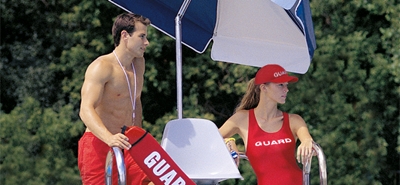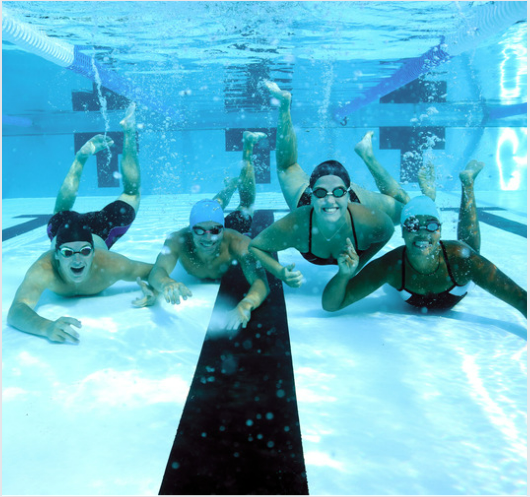The goal of any aquatic professional is to find, hire, and keep the best staff that you possibly can. You have tools in place that help find and hire the appropriate team to perform. How can you use them to the best of your ability? Now that your team is here, how do you keep them? Often it is up to aquatics leadership to determine what and how they are going to do to put their team together and ensure that they stay all season, or year over year. When you look at any
lifeguard team, there are going to be widely different personalities. Not everyone is built the same. A one size fits all approach doesn’t work and cannot be applied uniformly.
Step 1: Finding good lifeguard candidates
It starts with recruiting and finding an adequate candidate pool to focus your attention on. Schools are a great place to start since the key demographic for lifeguards are in high school or college. You can inquire with the school as to what assistance they can provide, and what guidelines are in place with regards to employers partnering with the institution to reach their students. They may allow posting information at their campus, possibly on the schools website, or even the ability to have slotted times to be able to be on campus and speak with the candidates directly.
By taking advantage of the opportunity to be involved and help any candidates find jobs is a good thing. You can build long-term partnerships with these institutions that can open other doors that may not have been thought of such as school tours or job training programs. This may also provide exposure for your facility within the student population as tours and shadow days can give them an idea of what it’s like to work there.
Step 2: Hiring the right lifeguards
Once good candidate pools are found, it’s time to interview and hire. This process can be challenging since there are do’s and don’ts in each state that must be followed. Outlining a process is important to ensure that you can conduct this process thoroughly and fairly. There are questions you cannot ask and you want to be conscious of these so that you don’t put your organization at any risk. In addition, this process is a chance to get to know the candidates. This is an important step in determining whether or not this individual will help or hinder your team. Take adequate time to get to know them. If you are working hard to get them to open up and come out of their shell, is this a candidate that is going to be confident enough to address rule infractions?
There are varying levels of performance within a team and you will have highly skilled based candidates who don’t have any struggles with
CPR and fully understand what’s necessary to perform. These same candidates may not feel comfortable enforcing rules and dealing with people. These attributes are important to set them up for success. The last thing you want to do is put an individual in this role that isn’t prepared to tackle what they encounter. It’s not just lifeguard related attributes that you are looking for either. During the interview process, you should try and create an environment with the candidate that is true to your culture.
If your culture is very relaxed and team-oriented, don’t be rigid and isolate them. They may not enjoy that type of organization and you may lose a good candidate. On the flipside, you may not see how they will behave and perform in that environment. If you like the candidate in the interview, invite them to be part of your team. You can like someone based on what you’ve seen, but they may not understand the role lifeguards really play for an aquatic facility. They may lack the confidence in a scenario or not feel comfortable providing first aid. It is important that you don’t push them to do things they aren’t comfortable doing because you will lose their trust, and potentially put your facility at risk. Having team members that are passionate and committed to what they do are key to having a solid team foundation.
Step 3: How to keep your lifeguard team together
Now that you have a team that can, and wants to perform, keeping them is the next challenge. The first thing that you need to understand is that most, if not all of your team, do not want to make aquatics their career. This is not something that they necessarily will care about as much as you. So, what do they care about? Determining what motivates your team is essential in order to take good care of them. A very important aspect of this that needs to be understood is that you do not have to treat everyone equally. Now, I’m not saying that you can discriminate one team member and favor another. I’m saying that if one team member needs to have a conversation with you for some guidance, you don’t need to jump to provide the same amount of time to your whole team.
Equal and fair are two different things. You need to treat them all fairly. The time and guidance you give may be important to one team member, and a thank you and pat on the back may be what another team member needs. One team member may need a day off because of finals and another because they have a date. Both of these days are important to each individual and shouldn’t be viewed any differently. Giving each team member what they need to feel fulfilled and having a culture where your team feels like they are getting what they need, is the most important thing to remember. For your teams as a whole, it is always great to host events that get the whole team together, and what team doesn’t like a party? Also, thank you gifts such as
lifeguard incentives can be used for recognition for attendance, skills, or rescues performed. These are a great idea for those individuals that want to take advantage of it.
Conclusion
Working to find, hire, and retain any team is a difficult challenge. The process starts at the beginning with finding candidates. Whatever process is in place, it’s important that you be sure to do your best to pick the right ones. Hiring the right lifeguard team stems from the interview process and the environment that you bring them into. Onboarding a team member is the first step in retaining them. Creating a great culture to work in and taking care of their needs are key things that you can do to retain a well-performing team.
What have tools and resources do you have in place for finding, hiring, and retaining your lifeguard team? Please share your stories and thoughts in the comments below.








Leave a Comment
Your email address will not be published. Required fields are marked *